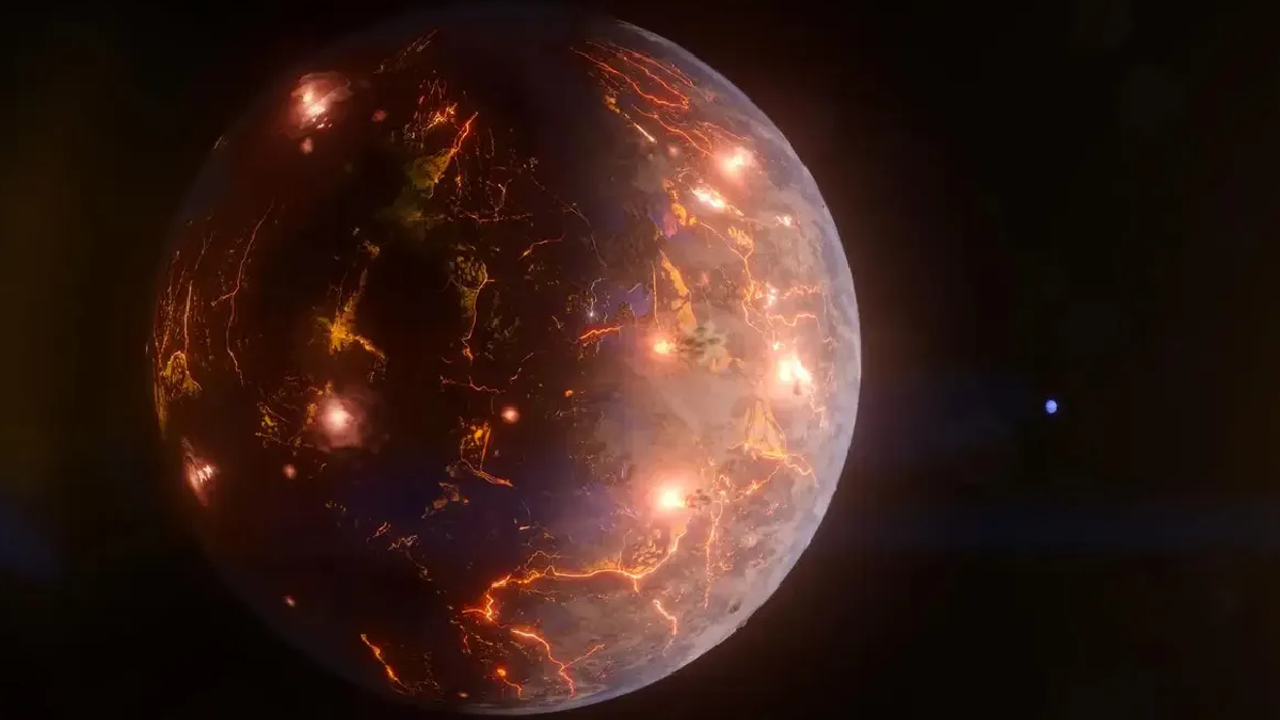Almost Earth-sized planet covered in volcanoes discovered
Data from NASA's space telescope Transiting Exoplanet Survey Satellite and the Spitzer Space Telescope, which will be deactivated in 2020, have revealed an Earth-sized rocky planet with remarkable characteristics.

Astronomers have discovered a planet they believe to harbor active volcanoes. In a study published in the journal Nature, a multinational team of astronomers announced their findings on the new planet. Scientists say there may be water on part of the planet's surface and that the rocky planet is an Earth-sized exoplanet.
According to Engadget, the scientists named the planet 'LP 791-18 d' and said it is located in the constellation Crater, about 90 light years from Earth. LP 791-18 d orbits a red dwarf to which it is tidally locked, indicating that the planet does not have a day and night cycle like Earth. Instead, one part of LP 791-18 d is constantly bathed in sunlight, while the other part is always in darkness.
THERE MAY BE WATER ON THE DARK SIDE
"The daytime side would probably be too hot to have liquid water on the surface," says Björn Benneke, one of the astronomers studying the planet and a researcher at NASA's Jet Propulsion Laboratory. "But the amount of volcanic activity that we suspect is occurring all over the planet could sustain an atmosphere that could allow water to condense on the night side."
The LP 791-18 system has at least two other planets, called LP 791-18 b and c. LP 791-18 c is two and a half times larger than Earth and more than seven times its mass. It also influences the orbit of LP 791-18 d, causing the system to move along an elliptical path around its sun. This path results in LP 791-18 d being deformed every time it completes an orbit. According to NASA, "These deformations can generate enough internal friction to significantly heat the planet's interior and produce volcanic activity on its surface."
WEBB TELESCOPE WILL SET ITS SIGHTS THERE
Jessie Christiansen, co-author of the study, said:
"A big question in astrobiology, which broadly studies the origins of life on Earth and beyond, is whether tectonic or volcanic activity is necessary for life. In addition to potentially providing an atmosphere, these processes can churn up materials that would otherwise sink and get trapped in the crust, including things we think are important for life, like carbon."
Meanwhile, the James Webb Space Telescope's infrared imaging instruments, developed by NASA (US space agency), ESA (European Space Agency) and CSA (Canadian Space Agency), are scheduled to observe LP 791-18 c. The team that discovered LP 791-18 d thinks the exoplanet will be an 'outstanding candidate for atmospheric surveys by the mission'. Notably, the retired Spitzer Space Telescope helped detect LP 791-18 d before NASA decommissioned it in 2020.
Source: Engadget







